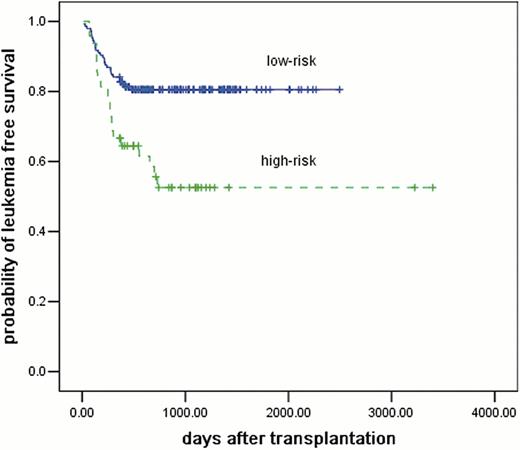Abstract
The impact of risk-related parameters has not been defined in transplant settings.
We analyzed the data of 255 consecutive patients (median age: 26) with acute myeloid leukemia (AML) in their first or second remission (CR1 or CR2) after haploidentical hematopoietic stem cell transplantation (HSCT).
Three parameters were found to be predictive of outcome: response after induction therapy, WBC count at diagnosis, and cytogenetics. These three factors were combined to yield two risk groups. The 2-year cumulative incidences of relapse for patients at low and high risk were 8% and 36% (p = 0.001), respectively. The three-year probabilities of leukemia-free survival (LFS) for these two groups were 80% and 52% (p = 0.001), respectively. Multivariate analysis for relapse and for LFS showed that not achieving CR after 2 courses of therapy was the strongest independent prognostic factor (p=0.001, and p=0.019, respectively). In addition, in a subgroup of patients with quantification of minimal residual disease (MRD) at the time of HSCT, positive MRD at this time point was correlated with a poor outcome.
Our results suggest that the index is simple and predictive, so it might be applied to assist with risk-directed post-transplant therapy for young patients with AML in CR who have received myeloablative haploidentical HSCT.
Probability of leukemia-free survival with respect to risk group after haploidentical HSCT (p =0.004)
Probability of leukemia-free survival with respect to risk group after haploidentical HSCT (p =0.004)
No relevant conflicts of interest to declare.

This icon denotes a clinically relevant abstract
Author notes
Asterisk with author names denotes non-ASH members.


This feature is available to Subscribers Only
Sign In or Create an Account Close Modal